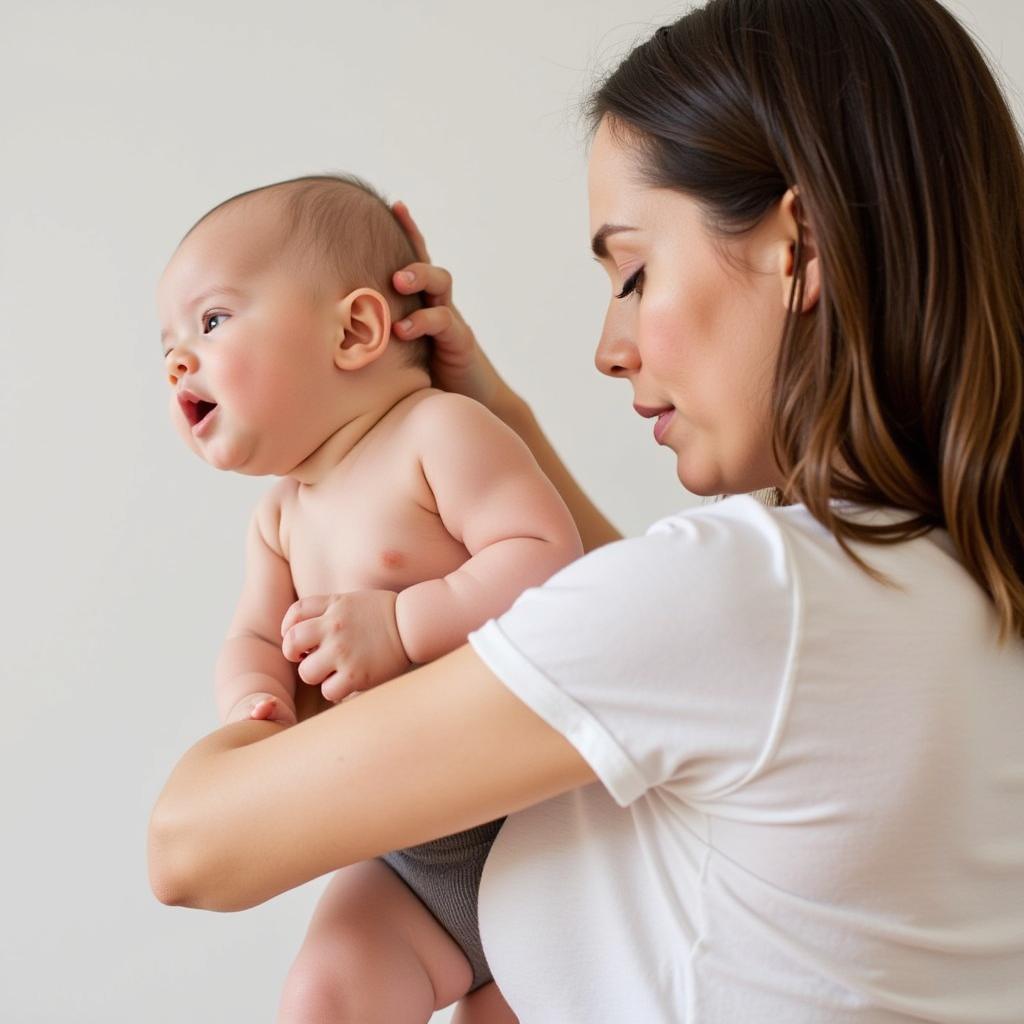Baby Bubbles are a common sight, especially during bath time. But what are they, and what do they mean? This comprehensive guide will delve into everything you need to know about baby bubbles, from their causes and significance to tips for managing them.
Understanding Baby Bubbles: More Than Just Cute Fun
While it’s adorable to see babies blowing spit bubbles, the term “baby bubbles” usually refers to bubbles in a baby’s mouth, particularly during feeding. These bubbles can be caused by various factors, and understanding their cause is crucial to ensuring your baby’s well-being.
Common Causes of Baby Bubbles in Mouth
1. Normal Air Swallowing
Babies, especially newborns, are still learning to coordinate sucking, swallowing, and breathing. This can lead to them swallowing air during feeding, resulting in bubbles around the mouth.
2. Fast Flow Nipple
If you’re bottle-feeding, a nipple with a flow that’s too fast can cause your baby to gulp air along with the milk, leading to bubbles.
3. Improper Latch (Breastfeeding)
A poor latch during breastfeeding can prevent a proper seal, making your baby swallow air while trying to get milk.
When to Worry About Baby Bubbles
While most cases of baby bubbles are harmless, excessive or persistent bubbling, especially accompanied by other symptoms, can be a red flag.
Signs to Watch Out For:
- Excessive Spitting Up: Frequent and forceful spitting up along with bubbles might indicate reflux.
- Choking or Gagging: If your baby chokes or gags while bubbling, it could be a sign of feeding difficulties.
- Breathing Problems: Difficulty breathing or noisy breathing requires immediate medical attention.
- Poor Weight Gain: If your baby is not gaining weight as expected and exhibits excessive bubbling, consult your pediatrician.
Managing Baby Bubbles: Tips and Tricks
 Mother burping baby
Mother burping baby
- Frequent Burping: Burp your baby frequently during and after feeding to help release trapped air.
- Paced Feeding: Encourage slower feeding by pacing the bottle or offering breaks during breastfeeding.
- Correct Latch: Ensure a proper latch if you’re breastfeeding. Consult a lactation consultant if needed.
- Nipple Flow Check: If bottle-feeding, make sure the nipple flow is appropriate for your baby’s age and feeding pace.
Conclusion
Baby bubbles are often a normal part of infancy, especially during feeding. By understanding their causes and monitoring for any accompanying symptoms, you can ensure your baby’s well-being. If you have any concerns about your baby’s bubbling or feeding habits, don’t hesitate to reach out to your pediatrician for guidance.
FAQs
-
Are baby bubbles always a cause for concern?
No, most baby bubbles are normal and nothing to worry about. -
When should I contact my pediatrician about baby bubbles?
Contact your pediatrician if the bubbling is excessive, accompanied by other symptoms, or if you have any concerns. -
Can I prevent my baby from swallowing air while feeding?
While you can’t completely prevent it, techniques like paced feeding and proper positioning can minimize air swallowing. -
What are some signs of a good latch during breastfeeding?
Signs of a good latch include wide-open mouth, lips flanged out, chin touching breast, and audible swallowing. -
How often should I burp my baby?
Burp your baby every 2-3 ounces during bottle-feeding and several times during breastfeeding.
Need Assistance?
Contact us! Our dedicated customer support team is available 24/7 to answer any questions or address any concerns you may have.
Phone: 0902476650
Email: [email protected]
Address: 139 Đ. Võ Văn Kiệt, Hoà Long, Bà Rịa, Bà Rịa – Vũng Tàu, Việt Nam.





